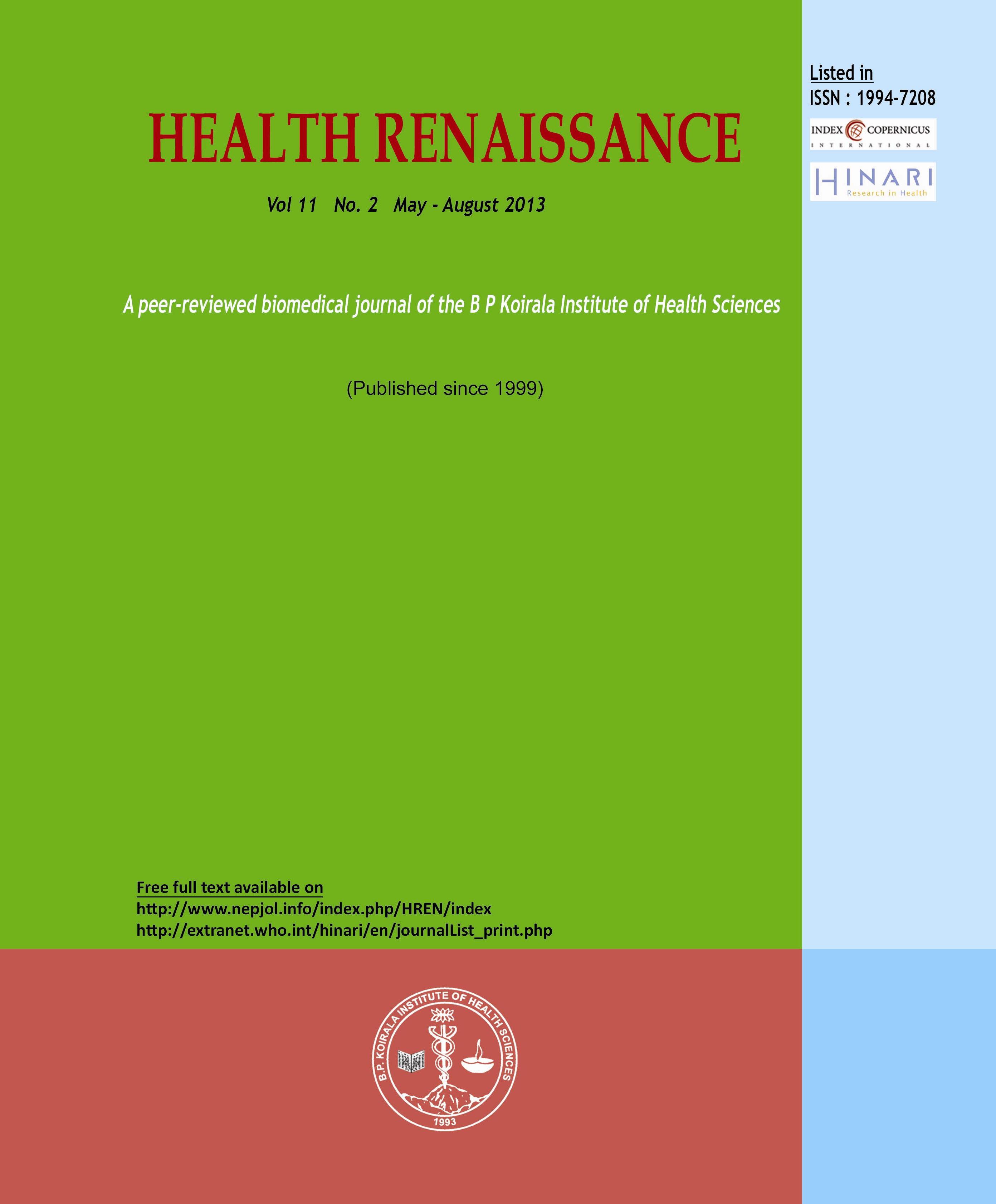Quadriceps angle in eastern Nepalese population
DOI:
https://doi.org/10.3126/hren.v11i2.8223Keywords:
quadriceps angle, extensor mal-alignment, q angle variation, anthropometryAbstract
Introduction: Controversy still exists about within-subject and between-group variation of quadriceps angle (Q angle). Moreover, the reference value for our population has not been studied. Still many more determinants of Q angle are to be explored.
Objectives: To determine a reference value for normal Q-angles among eastern Nepalese population and determine its correlation with other anthropometric determinants.
Methods: 1200 subjects were included form representative districts of eastern Nepal and their Q angle from both sides in various position of limb was measured. Correlation between them as well as their correlation with age, height, weight and arm span of every individual was analyzed.
Results: Quadriceps angle in the study population was symmetrically distributed. Between-group (male versus female), within-subject (right versus left lower limb), within-position (supine versus standing) difference in Q angle was not significant. Weight in males, in contrast to females, has strong correlation with Q angle.
Conclusion: We conclude that there is within subject, within position and between gender asymmetry in Q angle. Thus in recording Q angle measurements, both sides should be measured with limb position specified.
Health Renaissance, January-April 2013; Vol. 11 No.1; 150-156




